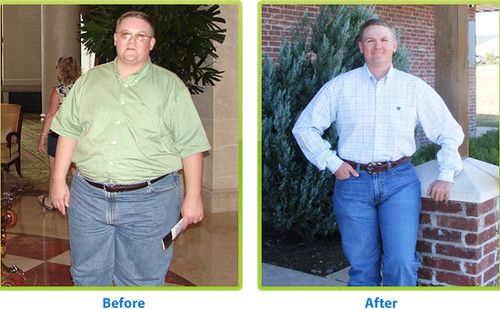Updated on: October 15, 2024 7:13 am GMT
Powerlifting is a demanding sport that requires immense strength and technique. However, for many athletes, staying lean is just as crucial as lifting heavy weights. Did you know that effective fat loss strategies can not only improve your overall health but also boost powerlifting performance? In this article, we’ll explore various methods powerlifters can use to achieve fat loss without sacrificing muscle mass or strength. You will learn practical tips that balance caloric intake while optimizing energy for lifts, allowing you to maintain peak performance while trimming down.
Understanding Fat Loss for Powerlifters
When it comes to fat loss, powerlifters need to approach the process with a unique mindset. The goal isn’t merely to lose weight; it’s to lose fat while retaining muscle. Several factors influence how powerlifters can achieve this:
- Caloric Deficit: Consuming fewer calories than you expend is essential for fat loss.
- Macronutrient Balance: Balancing protein, fats, and carbohydrates can help maintain muscle while losing fat.
- Timing of Nutrients: When you eat can affect performance and recovery.
A well-structured plan will ensure that energy levels remain high so that training sessions don’t suffer.
Key Strategies for Effective Fat Loss
To lose fat effectively, powerlifters should consider the following strategies:
1. Prioritize Protein Intake
Protein is vital for muscle preservation during a caloric deficit. Aim to consume around 1.2 to 1.6 grams of protein per kilogram of body weight daily. This can help curb hunger and support muscle recovery. Sources include:
- Lean meats (chicken, turkey, and lean beef)
- Fish (salmon, tuna)
- Dairy products (Greek yogurt, cottage cheese)
- Plant-based proteins (lentils, chickpeas)
2. Implement Smart Carbohydrate Choices
Carbohydrates are crucial for energy, especially during intense training sessions. However, choosing the right types can make a difference. Focus on:
- Whole grains (brown rice, quinoa, oatmeal)
- Fruits and vegetables (high in fiber, keeping you full)
- Avoid refined sugars and excess processed foods, as they can lead to weight gain.
Balancing carbohydrate intake with activity levels can keep energy high without added fat.
3. Include Healthy Fats
Healthy fats are essential for hormone production and overall health. Incorporate sources like:
- Avocados
- Nuts and seeds
- Olive oil
- Fatty fish
These will provide energy and help you feel satisfied.
4. Stay Hydrated
Hydration is often overlooked but is equally significant. Drinking enough water aids digestion, supports metabolism, and can prevent overeating.
- Aim for at least 2 to 3 liters of water daily, depending on activity levels.
5. Create a Structured Meal Plan
Planning meals can prevent impulsive eating and ensure that nutritional goals are met. Here are steps to consider:
- Meal prep for the week to have ready-to-eat options.
- Track daily caloric intake and macronutrients to stay on target.
- Include a variety of foods to prevent boredom and maintain adherence.
The Role of Training in Fat Loss
For powerlifters, training is not just about lifting weights; it’s also a crucial component of fat loss. Here are ways training can enhance fat loss while preserving muscle mass:
1. Incorporate Strength Training
Maintaining a strength training routine helps preserve muscle mass during fat loss. Focus on:
- Compound movements (squats, deadlifts, bench press).
- Progressive overload to keep challenging the muscles.
2. Add Cardiovascular Exercise
Cardio can accelerate fat loss when incorporated wisely into the training regime. However, too much can lead to fatigue and hinder strength progress. Consider:
- High-Intensity Interval Training (HIIT) for efficient fat burning.
- Low-Intensity Steady State (LISS) when needing recovery.
3. Include Rest and Recovery
Rest days are vital for recovery and long-term success. Without adequate recovery, the body struggles to repair itself, which can lead to burnout or injuries.
- Try to get 7 to 9 hours of sleep per night.
- Consider mobility work or light activities on rest days.
Monitoring Progress
Tracking progress is crucial to stay motivated and make necessary adjustments. Use metrics such as:
- Body weight
- Body composition analysis
- Performance on lifts
A balanced approach will yield the best results. Consider taking measurements and photos to visualize progress over time.
Lesser-Known Tips for Success
In addition to the primary strategies discussed, consider these lesser-known tips:
- Mindful Eating: Paying attention to hunger cues can prevent overeating.
- Motivational Mindset: Stay positive and set realistic goals to maintain motivation.
- Social Support: Engaging with a community or workout group can foster accountability.
Conclusion
Effective fat loss strategies for powerlifters require a holistic approach, combining nutrition, training, and recovery. By prioritizing protein, making smart carbohydrate choices, incorporating healthy fats, staying hydrated, and adopting structured meal plans, powerlifters can achieve their fat loss goals without compromising muscle gains.
As you start your journey, keep in mind that it might take some time to see progress. But don’t worry—the hard work will pay off for both your body and your lifting skills. By sticking to these strategies, you can make lasting changes that will help you excel in powerlifting. Stay focused on your goals, enjoy the journey, and look forward to becoming a healthier and stronger version of yourself!
